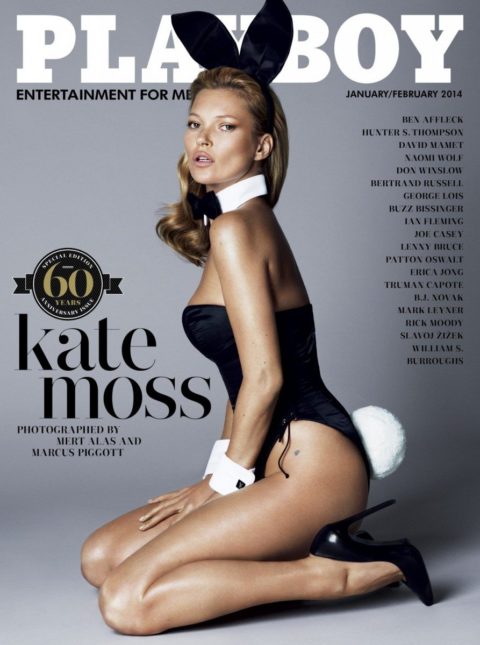Does the End of Nudity in Playboy Mean the End of Sexual Taboos?

This weekend, news broke that Playboy has officially reached the end of an era: as of 2016, the magazine will no longer publish nude photos, which will come two years after it banned nudity from its website, too.
“The political and sexual climate of 1953…bears almost no resemblance to today,” said Playboy Enterprises CEO Scott Flanders. “We are more free to express ourselves politically, sexually, and culturally today, and that’s in large part thanks to Hef’s heroic mission to expand those freedoms.”
And I mean, sure. Sure, we can chalk up elements of the sexual revolution to Playboy founder Hugh Hefner—even though he’s far from being a feminist hero—but more specifically, we can actually cite the publication with having changed the game in terms of reflecting the revamped social and political landscapes of the fifties and beyond.
While “I read Playboy for the articles” became a long-running joke of our parents’ and grandparents’ generation, our own has been privy to important pieces in print and online at the hands of smart, funny female writers, who’ve used the magazine to tackle everything from gamergate to Grumpy Cat. While it’s easy to write off Playboy as another avenue for sexism (which in some cases it is, as are countless other online outlet that also contain thought-provoking, interesting pieces), its website has arguably evolved into a culturally-relevant digital space. A lack of nudity has simply created more space for think pieces, commentary, and Twitter lists, which answers the age-old question about the publication, “If you take nudity out, what’s left?” (Spoiler: lots.)
The truth is, unlike its website, Playboy’s magazine is outdated. Nudity isn’t taboo like it used to be (contrary to Instagram’s fear of nipples), and it also exists outside the male gaze, meaning: we don’t need platforms like Playboy as a means for a woman to decide to be naked. She can just be naked. And she can do it for herself, and without the purpose of appeasing men. By taking nudity out of Playboy, the magazine seems to have wrapped its head around the idea that women don’t exist for men alone. And while photos will still be “risque,” I can’t imagine them being anything more scandalous than what we find in Cosmopolitan, Glamour, or even on Shutterstock. Especially since nudity is whatever you want it to be now: one person’s art is another person’s catalyst for a Kim Kardashian-on-the-cover-of-Paper-induced panic attack.
Ultimately, to see a naked person, you don’t need to flip through a magazine under the cloak of darkness. You can see all kinds, everywhere, and for different reasons, on different platforms, bless us everyone.
So will Playboy the magazine become Playboy the website? Will it prove its worth outside the interest of dudes vying for a glimpse of women posing for them? Will it move out of the scope of its founder and leave him and his fifties-centric views behind? Might it even help promote a modern approach to sex and to nudity and to what it means to be a thinking human person in 2015? Might the idea of bunny ears seem as passe as comparing a woman to a rabbit in general?
With this new direction, we’ll find out. And at the very least, if anything, this latest move has done something Playboy’s failed to do for years: make us think and talk about Playboy in terms of “what it means.” Or in general. Which, I think, probably means something.







